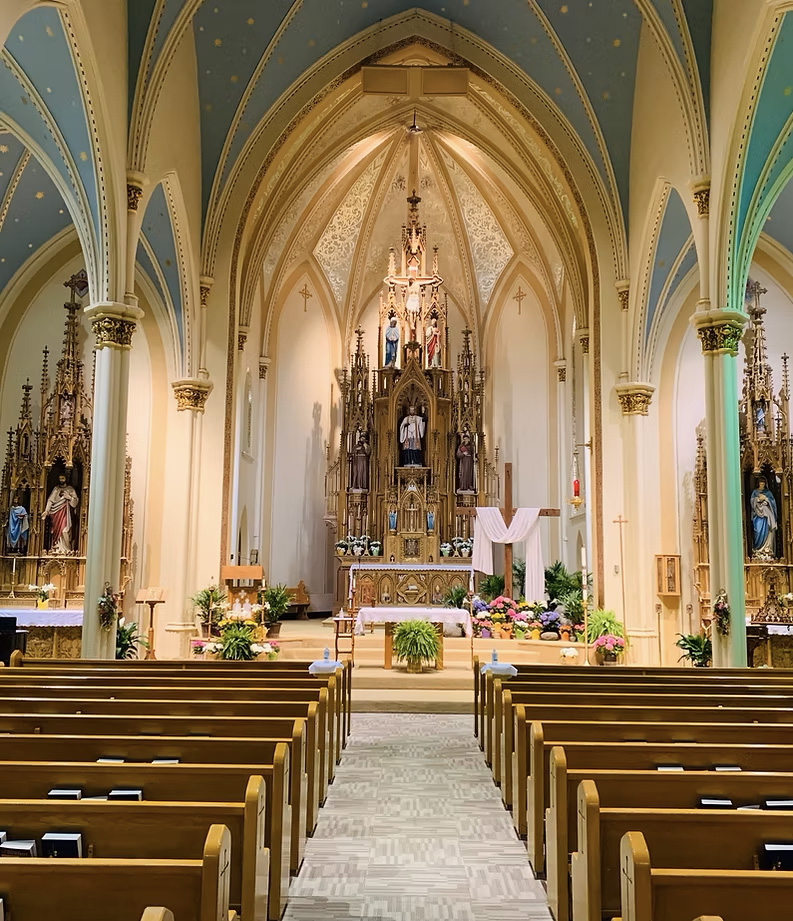The East End neighborhood covers the area between 31st Avenue East and 13th Avenue East. East End is often referred to as “Old Town” since it is where the first claims were made on the land that would later become Superior. The building of the canal at Sault St. Marie prompted speculators to view this place at the very tip of Lake Superior as the gateway to the west and the first claims on lands were staked in the summer of 1853.
Nemadji River
The name of the river comes from the Ojibwe language and means “left hand” because the river is at the left hand as you enter Superior Bay from the lake. The river is found along 31st Avenue East and is where the first speculators staked their claims to the land in Superior. It is also the site of the Military Road which was a means of transportation for people traveling to and from Superior during the winter months.
D.A.R. Monument
Superior’s Claude Jean Allouez chapter of the Daughters of the American Revolution placed a marker at 31st Avenue East to commemorate the settlement of the town and the site of Superior’s first building. It was dedicated in November of 1927.
Nemadji Cemetary
The Nemadji Cemetery Association and its cemetery was established on June 5, 1856. The earliest settlers are buried here as are the Native Americans who were moved to Nemadji from their own cemetery on Wisconsin Point. The cemetery is found along 31st Avenue East and its address, as listed in the city directory, is 1001 31st Avenue East.
Nelson Dewey School
Dedicated in January of 1935, Nelson Dewey School is located at 601 24th Avenue East and named after the first governor of Wisconsin. It is now an apartment building.
St. Francis Xavier Church
The steeple of St. Francis Xavier Church is one of the most familiar landmarks in Superior. The church was dedicated in 1908 and continues to serve the religious needs of its parishioners to this day. Across from the church, which is located at 401 24th Avenue East, are the school and convent that were also part of St. Francis parish. Both buildings have been converted into apartments.
East End Fire Hall
Built in 1898, the East End Fire Hall is the last of Superior’s old fire hall buildings. Located at 402 23rd Avenue East, it is now home to the Old Firehouse & Police Museum and the State of Wisconsin Fire & Police Hall of Fame.
East End Library
The last library built in Wisconsin with funds provided by Andrew Carnegie stands at 2306 East 5th Street. Now a private residence, the East End Library opened in September of 1918 and served as a branch of the Superior Public Library until December of 1991.
Superior Theatre
When is was opened in 1932, the Superior Theatre was billed as “the most modern” movie theatre in the northwest. Located at 2201 East 5th Street, it is now home to a hardware store.
Descent Block & Northern Block
The steeple of St. Francis Xavier Church is one of the most familiar landmarks in Superior. The church was dedicated in 1908 and continues to serve the religious needs of its parishioners to this day. Across from the church, which is located at 401 24th Avenue East, are the school and convent that were also part of St. Francis parish. Both buildings have been converted into apartments.
Houses
The house built by Denis Dean stands at 2130 East 4th Street. Dean was appointed the first postmaster of Superior in June of 1854. Another interesting East End residence is the Ritchie home at 1930 East 4th Street. Dating back to the 1850s, the Ritchie family occupied the house until 2022.
The Waterfront
A walk on the Osaugie Trail, which borders the bay of Lake Superior in East End, will take the visitor past the remains of the Northern Pacific Dock at 37th Avenue East and the old flour mills located behind McDonald’s at 22nd Avenue East.


You may want to add that not only does the East End Fire Hall serve as the home of the Old Firehouse and Police Museum, but it is also the home of the State of Wisconsin Fire & Police Hall of Fame (HOF), established in 1995 by State statute s. 213.106.